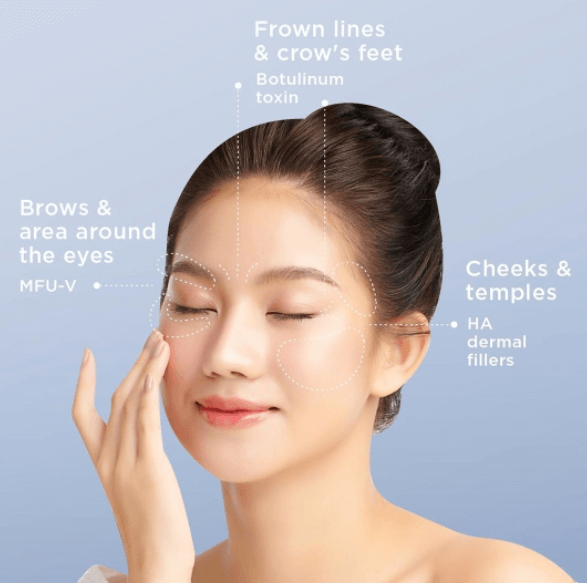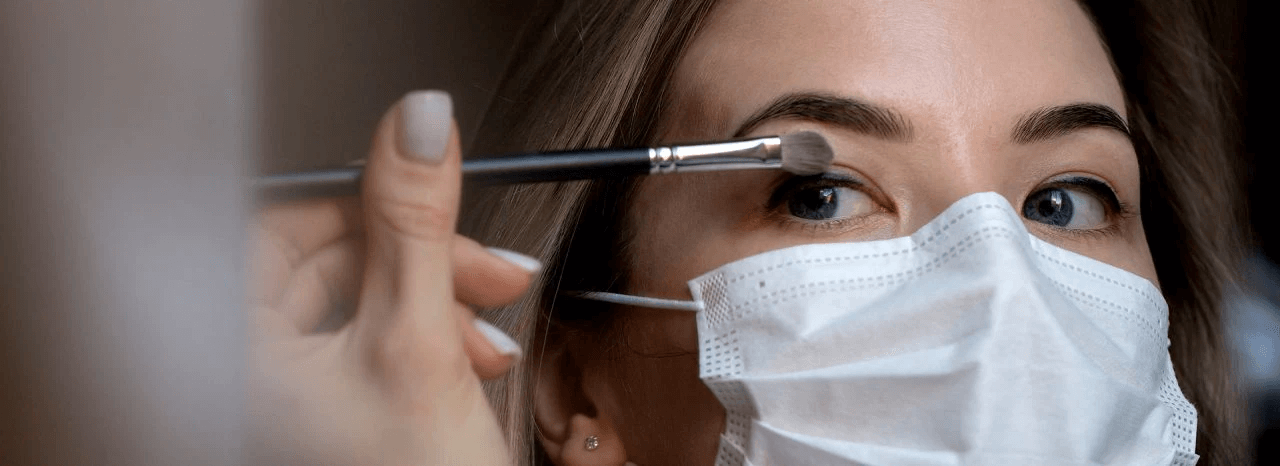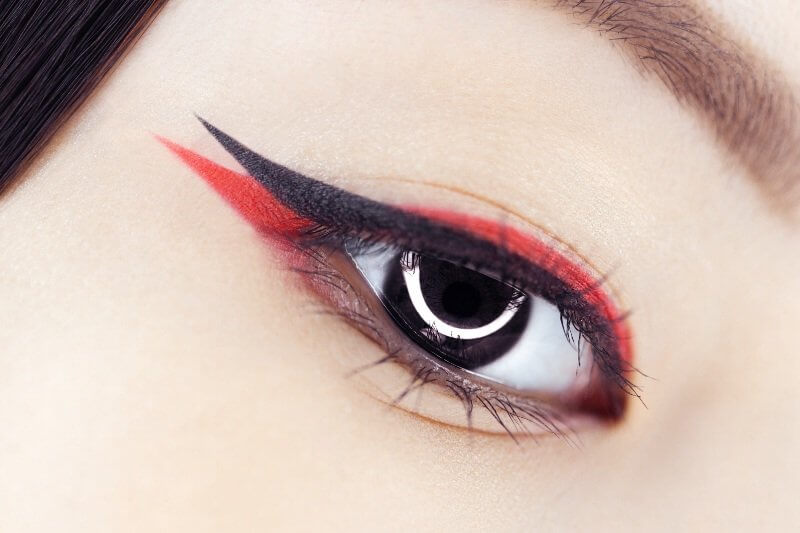Two of the common questions surrounding aesthetic treatments are: what are the differences between botulinum toxin and dermal fillers, and which treatment should I choose?
Here is a guide that explains the differences between these two popular aesthetic treatments so that you would no longer be confused!
Let’s start with a simple introduction:
What is Botulinum Toxin?
Botulinum toxin type A injections are a purified form of botulinum toxin that is obtained from the Clostridium botulinum bacteria. This is often used in the realm of aesthetics to target relaxation of selective facial muscles, thereby softening and reducing the appearance of wrinkles in a minimally invasive manner.
What are Dermal Fillers?
Dermal fillers are also a form of injectable aesthetic treatment; they are typically made of either hyaluronic acid or calcium hydroxyapatite. Dermal fillers can be used to fill static fine lines and skin folds, as well as contour and revolumise the face.
What are the Benefits of these Injectables?
Botulinum toxin treatment can help to improve the appearance of your skin and reduce dynamic wrinkles caused by repeated muscle movement such as frowning or squinting. Recent scientific publications also suggest that botulinum toxin can be used to lift the lower face, as well as injected intradermally to reduce facial redness, oily skin, and pore size for overall skin quality improvement. However, these applications are currently still considered off-label.
Studies have also shown an emerging trend of botulinum toxin resistance, with some patients finding that their treatments are losing their efficacy in the long run. Complexing proteins present in most commercially available botulinum toxins are foreign proteins with the potential to trigger the formation of neutralising antibodies against the active neurotoxin, which may result in partial or complete treatment failure 1-3. Hence, it is so important to choose a pure* botulinum toxin with zero impurities^ right from the very start to minimise the risk of developing toxin resistance!
Dermal filler helps restore volume in your face, provide structural support, and smoothen out static wrinkles, which are fine lines that are visible when your face is at rest.
In addition, hyaluronic acid dermal fillers give your skin a boost of moisture that is more effective than skincare; while calcium hydroxylapatite fillers can stimulate new collagen production! The result? Bouncy and plump skin all day long.
How Long do these Treatments Last?
For botulinum toxin injections, results may start becoming noticeable within 2 – 3 days, and can take up to 30 days in order to see the full results. Depending on the area being treated and other patient factors, you can look forward to results that last between 3 – 5 months!
For dermal fillers, you can expect to see immediate results once you’ve completed your treatment, with results lasting between 6 – 18 months depending on the type of dermal filler used.
Naturally, for both injectables the duration of effect is dependent on a few factors such as the treatment area(s), your skin’s natural condition, genetic factors, your lifestyle habits and your age.
Which is Right for Me?
Both of these treatments can be right for you.
Ultimately, it depends on what you want to achieve and what your beauty goals are. In fact for the best outcomes, both of these treatments can be used in combination to achieve natural looking results:
We hope that this guide helps you have a better understanding of these two common aesthetic treatments.
To find out more on what is suitable for you, book an appointment with a professional aesthetic doctor here.
*Pure refers to the absence of complexing proteins, inactive neurotoxin, flagellin and bacterial DNA contaminants.1
^Impurities refer to the presence of complexing proteins, inactive neurotoxin, flagellin and bacterial DNA contaminants.1
1.Park JY et al. Neurotoxin impurities: A Review of threats to Efficacy. Plast Recontr Surg Glob Open. 2020;8(1):e2627
2. Frevert J. Pharmaceutical, Biological, and Clinical Properties of Botulinum Neurotoxin Type A Products. Drugs R D. 2015 Mar;15(1):1-9.
3. Torres S., et al. Neutralizing antibodies to botulinum neurotoxin type A in aesthetic medicine: 5 case reports. Clin Cosmet Investig Dermatol. 2014;7:11-17.

































